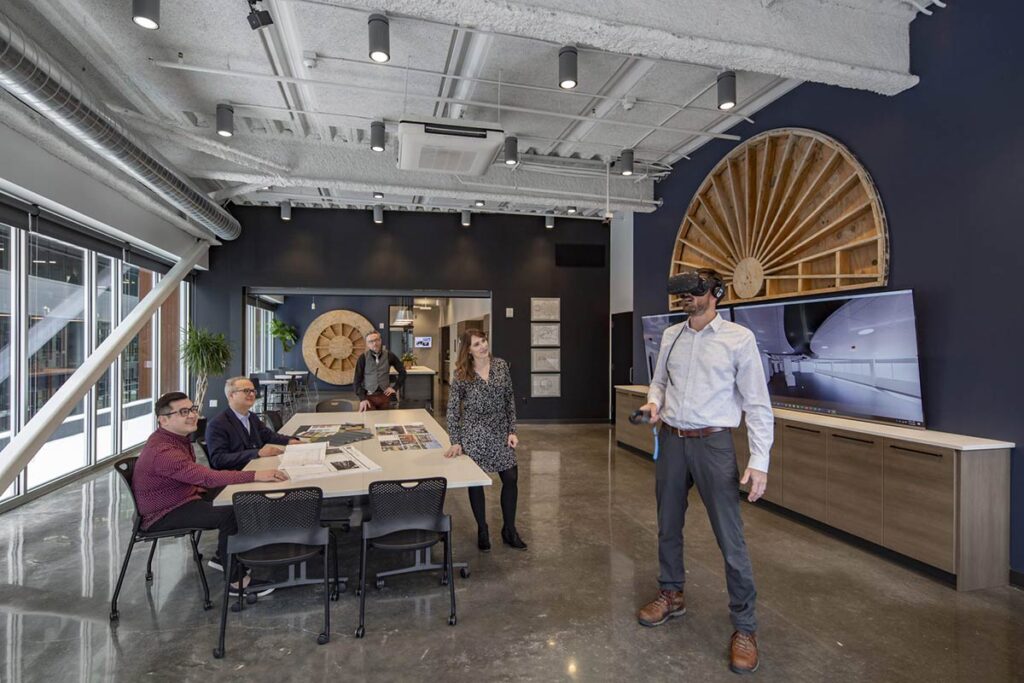Virtual reality (VR) is not new, not by a longshot. The need to “see virtually real” – real enough to base decisions on – has been a fundamental tenet of architecture from the beginning. Abstract architectural drawings date back to the tenth century in Europe. Spatial wooden building models appeared even before the Renaissance. In their day, that was Virtual Reality.
As our temporal understanding of technology advances, architects and engineers do what we do best – broaden the boundaries of design to improve a building’s appearance, quality, and performance. VR helps us achieve these heightened designs through the combined interplay of form, function, and facility.
Click to view the VR Panorama!
Yes, the building’s designs look spectacular, however of equal importance, these structures function flawlessly, economically, and intelligently. Complex engineered systems, advanced building envelopes, certified sustainable decisions, and interior designs all work in an integrated, unified manner to achieve optimal performance. Design Visualization is so much more than a building’s exterior appearance. It is an integral part of the design process.
AS WE SEE IT
We rely upon an advanced suite of Virtual Reality hardware and software which redefines how your mind’s eye receives and perceives minute details. While it’s easy to get caught-up in the gizmos and gadgets, the most fundamental advantages of VR remain its unmatched power and success to Communicate, Collaborate, and Coordinate. With VR, there is little need for interpretation, or making sense of abstract concepts. Everything is right there in “real” space. Discussions are more attentive given that everyone is focused on the same imagery.
Summit Credit Union Mt. Horeb Branch.
Explore 360° photography of the space!
Another advantage: Problem solving skills are great, but it’s even better to have problem avoidance skills – and that’s exactly what VR allows us to do. It keeps the entire team on the same page throughout the project, minimizing misunderstandings. It gives us the ability to look down the road and identify potential missteps or errors. We would rather avoid problems rather than figure out (preventable) solutions.
Authentic, cross-functional collaboration as the informed business model will always be our preferred path forward. VR allows us the tangible value of our architects, engineers, and interior designers, working together, collectively dialed, in real-time, into the details of the project.
“Virtual reality gives our designers a realistic sense of scale,” said Peter Tan, Strang’s Chief Design Officer, “Experiencing what it feels like being in the building offers us an opportunity to study spatial relationships. It also helps our clients by making the design process more thorough and more realistic.”
Watch a virtual walkthrough!
EXPLORING INTERACTIVE DESIGN
According to Drew Martin, Strang’s Director of Design Visualization,
“Intuition, creativity, and experience are the most powerful tools we have. VR allows us to verify that what works in our minds will actually work in the real world.”
Click to view the VR Panorama!
This is a form of VR’s computational design prowess, enabling accurate evaluation of complex, intersecting data to move forward with confidence. In addition, much of the data used in design is helpful to contractors during construction. Martin continued,
““Here at Strang, VR really empowers us to aggregate knowledge, initiate collaboration, and co-create with clients. And all of that helps us conserve client resources - financial, environmental, and human.”
Click to view the VR Panorama!
DESIGNING A STORY
Beyond VR, we also engage digital 3D renderings, videos, virtual building walkthroughs, and augmented reality to fly around jobsites to gain an understanding of obstacles and opportunities. Each of these tools, in tandem with clients and designers, allows us to create a compelling story which clearly advances the project’s understanding. This story builds a singular project voice which clearly communicates design intentions and aligns objectives with stakeholders. This is particularly helpful when communicating with constituencies who have limited experience working with traditional construction documents. The project story, combined with VR deliverables, results in an easily comprehensible message.
Good design is storytelling. And Interactive Design Visualization provides the worldbuilding to our client’s stories.
Click to view the VR Panorama!
THE TOOLS AT STRANG
Also of note, our use of VR tools remains an excellent example of Strang’s proprietary project protocol entitled, Design Synchronicity®. Here, we apply parallel design expertise from a single source. We believe that architects, engineers, and interior designers actually make each other’s work stronger, better. Design Synchronicity® is a mindset encompassing equal parts tenacity, quiet confidence, servant leadership and a genuine drive to excel. This is where all aspects of the project come together to help deliver optimal outcomes, thanks in large part to Interactive Design Visualization.
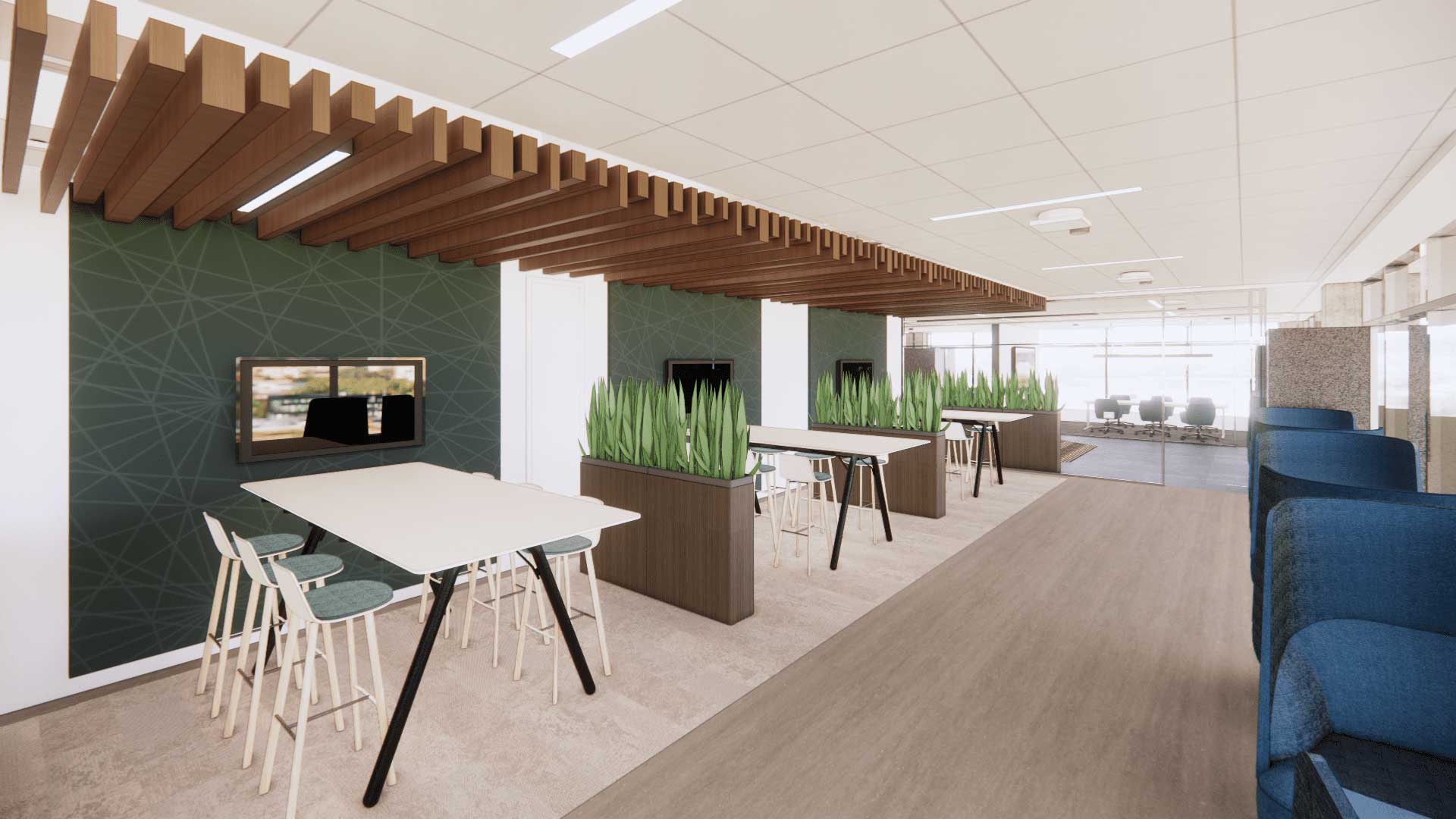

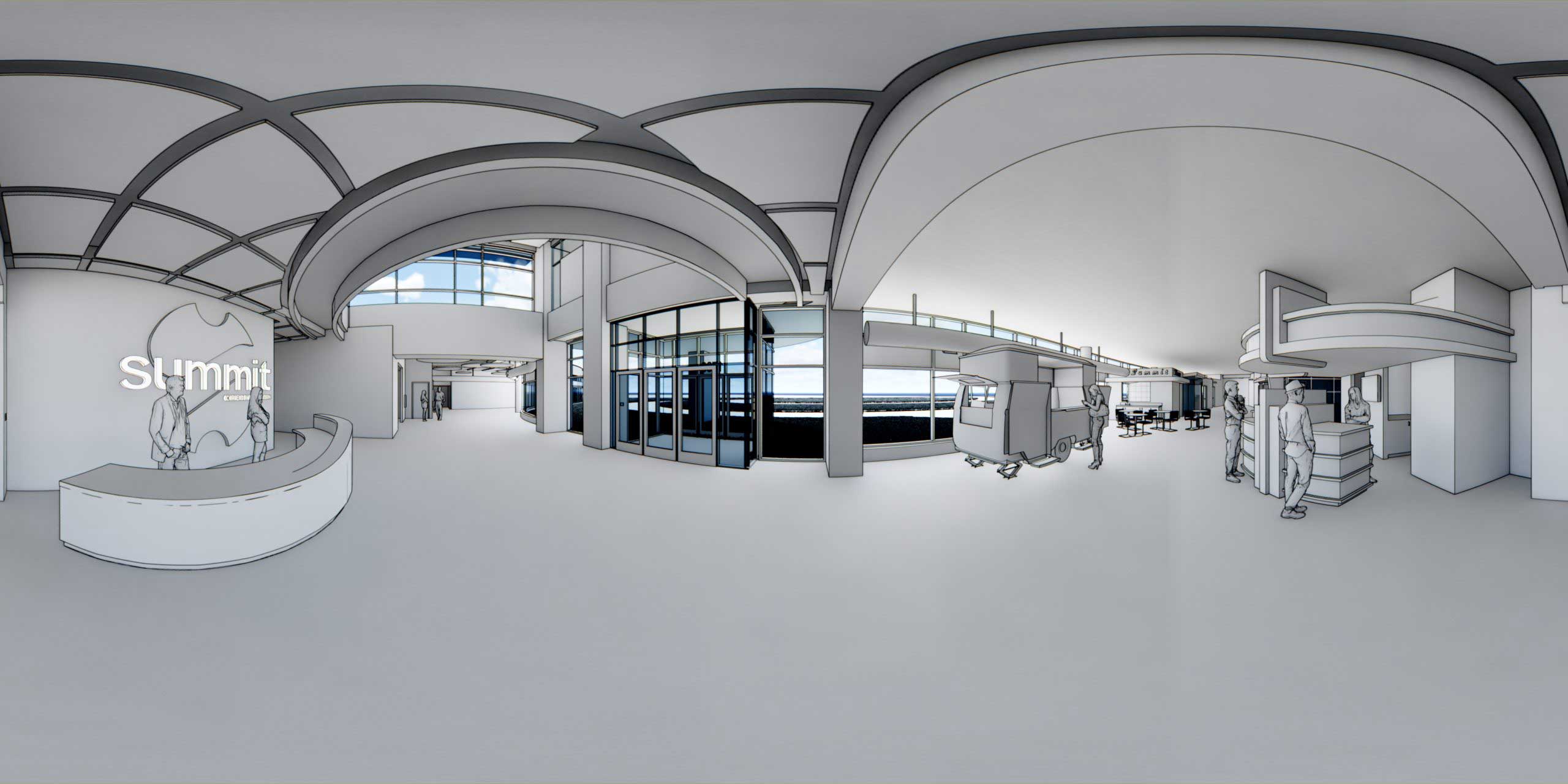
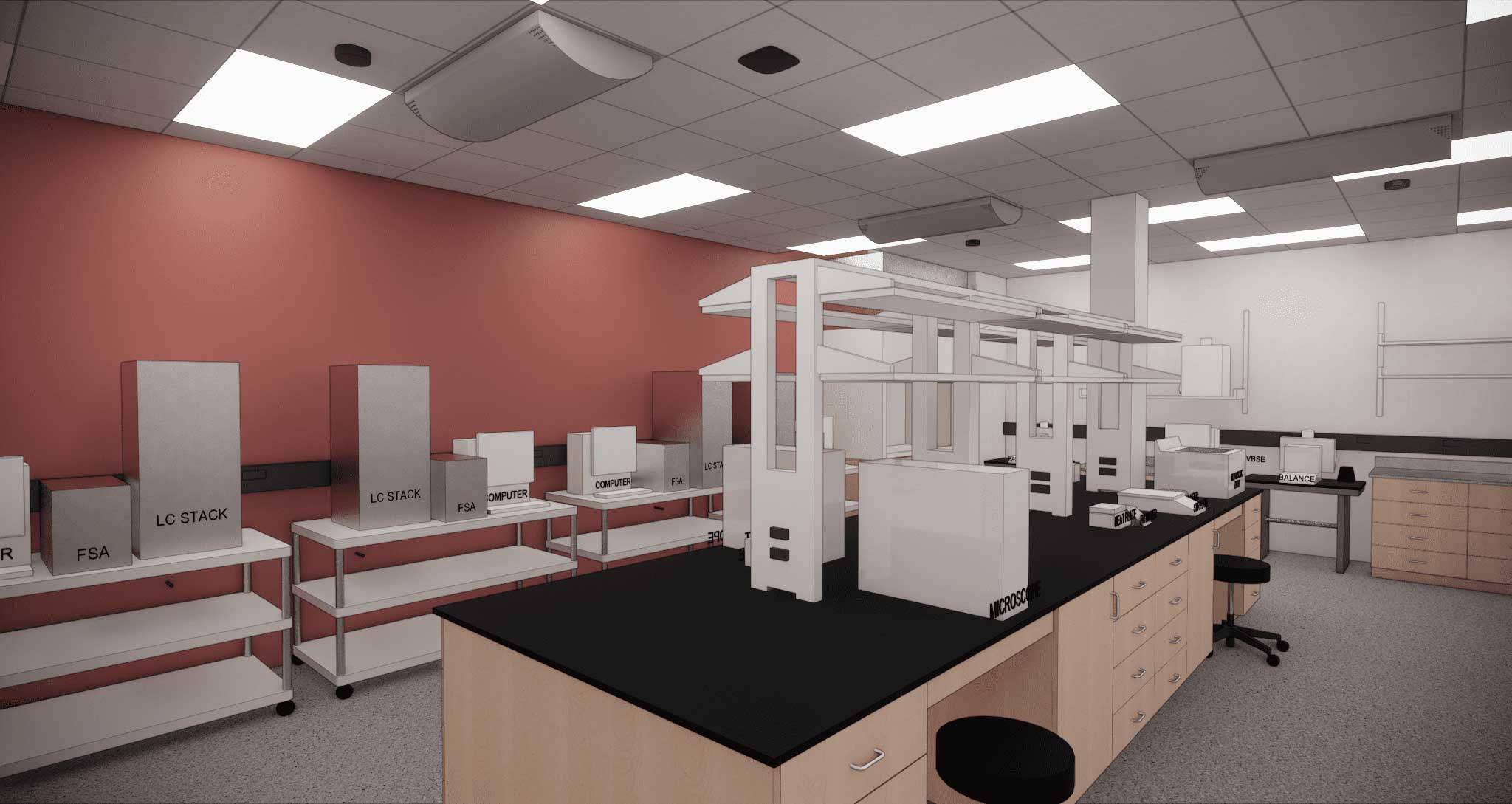
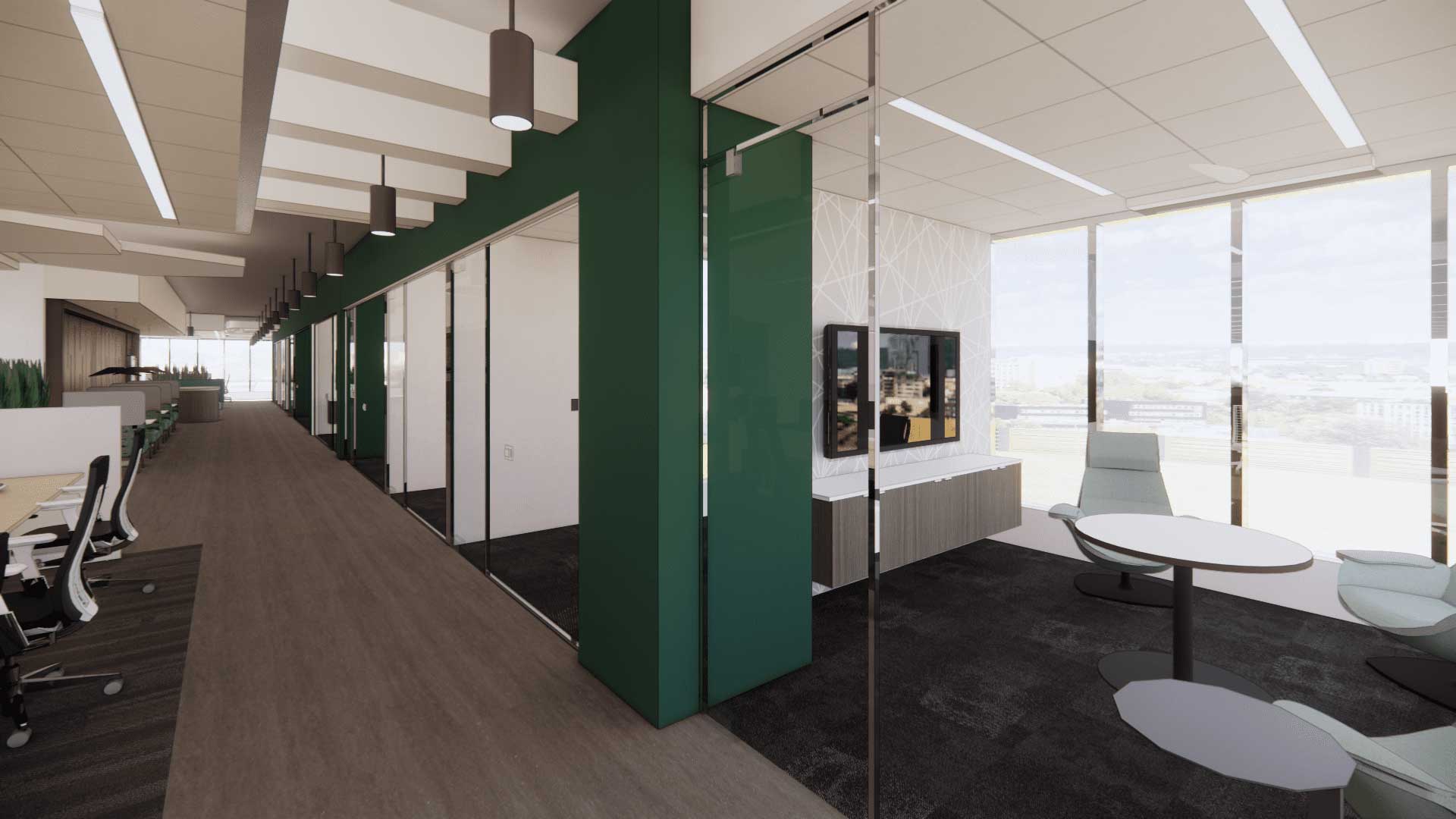
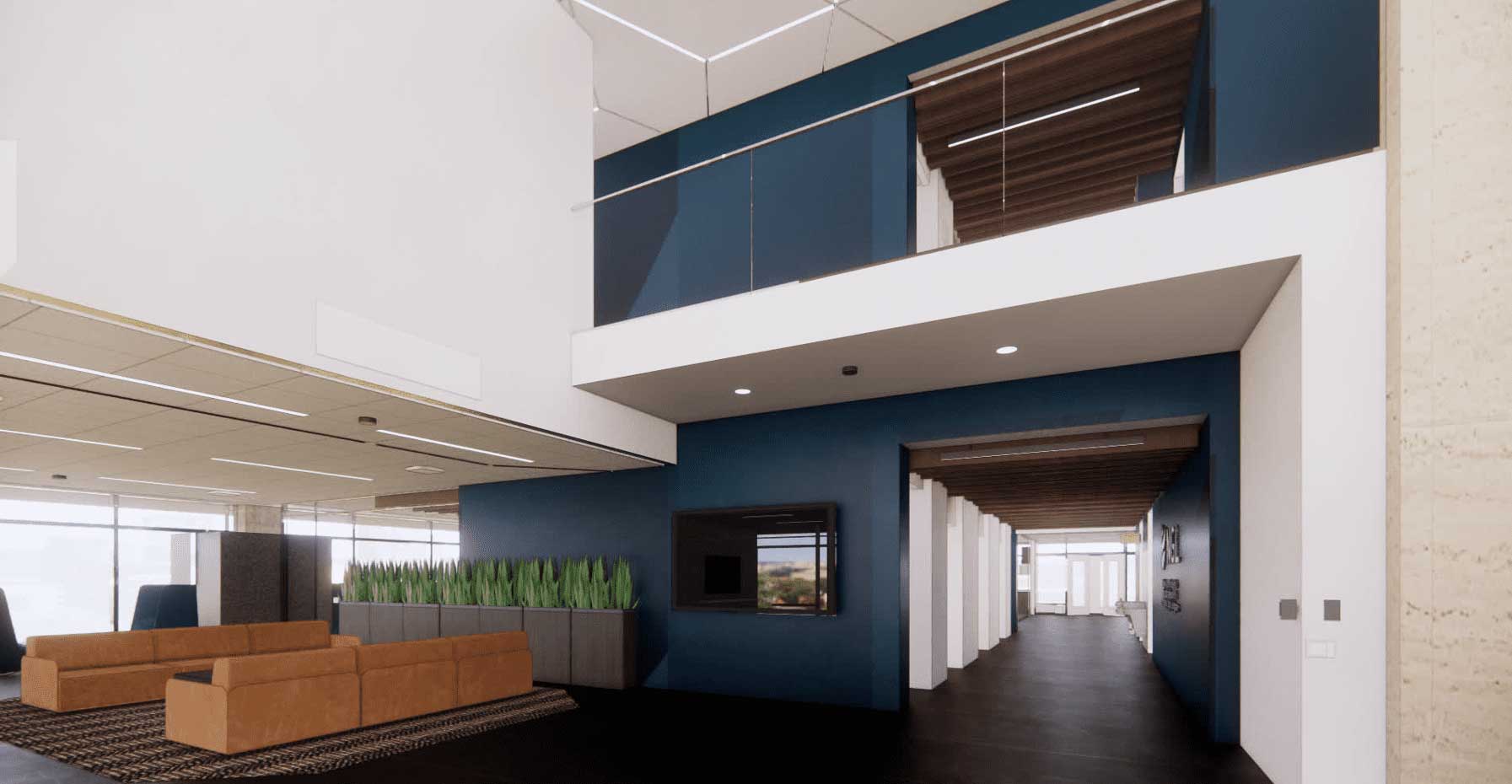
ON THE HORIZON
According to Martin, the future of VR will soon better reflect the needs of designers and project stakeholders. “VR is an integral part of the design process, and it continues to grow in accessibility for clients and consumers.” He foresees a world of further opportunities for VR use, such as organic 3D sketching, where people come together virtually to work collaboratively on it in real time.
Within a short span, VR and related technologies have transformed the world of design and architecture and its impact will only continue to evolve. The merging of the physical and virtual worlds offers exciting opportunities and revolutionary potential, certainly, architecture will never be same again.




